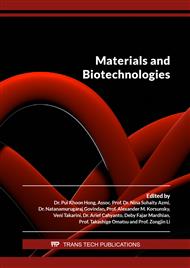p.37
p.49
p.55
p.61
p.69
p.79
p.87
p.95
p.103
Property-Structure Relationship on the Mechanics of Carbon Nanotube Yarns
Abstract:
Carbon nanotube yarns (CNTYs) are twisted hierarchical fibers which exhibit a strong property-structure relationship. Understanding of the property-structure relationship of CNTYs will allow their use in structural and energy dissipation (damping) applications. For this reason, the morphology and structure of dry-spun CNTYs are characterized by means of Raman spectroscopy mapping, atomic force microscopy, and scanning electron microscopy and correlated to their quasi-static and dynamic mechanical properties. The continuous CNTYs present some degree of structural variability, which explains the variability measured in their dynamic mechanical response. Under tension, 42.3 μm diameter (0.71 porosity) CNTYs reach specific strengths of ~0.8 N/tex and ultimate strains ranging from 4% to 7%. Mechanical hysteresis tests under incremental cyclic strain show that the CNTYs exhibits high energy dissipation, which concur with dynamic mechanical analysis (DMA). DMA shows that CNTYs are unconventional materials with high specific stiffness (per unit weight) as well as a very high damping ratio. The damping ratio increases with temperature and reach ~0.6 at 60 °C. The mechanical response of the CNTYs under tension can be explained mainly from changes in the hierarchical structural conformation of the yarn, rather than from changes in the carbon nanotube bond distance or inherent material properties.
Info:
Periodical:
Pages:
69-75
Citation:
Online since:
August 2022
Price:
Сopyright:
© 2022 Trans Tech Publications Ltd. All Rights Reserved
Share:
Citation:



